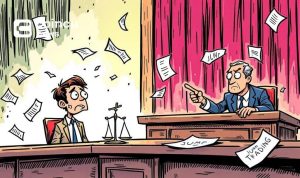Key Points:
- SVB former CEO blames bank run on rumors and the Federal Reserve’s interest rate hike.
- Bank customers withdrew $142 billion in deposits within 2 days, accounting for about 80% of the bank’s deposits.
- Former CEO’s claims contradict those of authorities; regulators attribute SVB’s failure to mismanagement and regulatory changes from the past administration.
According to former CEO of Silicon Valley Bank (SVB) Greg Becker, the bank’s failure can be traced back to a bank run that occurred after rumors circulated about the bank and the Federal Reserve’s interest rate hikes.

Becker made this claim during his testimony before the US Senate Banking Committee on May 16, where he went into detail about how social media played a role in the bank run. He also stated that no financial institution could survive a similar situation.
Becker blamed the Federal Reserve’s interest rate hike from last year as the primary cause of the bank run. He described the interest hike as “the steepest rate increase over a 12-month period in almost 40 years.” Additionally, he claimed that the financial regulator’s messaging of “transitory” inflation lured the bank into investing its securities portfolios in the low-yield environment created by the Federal Reserve.
While admitting the high rate affected the value of some of SVB’s securities portfolio, he claimed that the bank still had government-backed securities and could have borrowed against them. However, he noted that rumors and misconceptions surfacing online that compared SVB to Silvergate Bank triggered the bank’s collapse. These rumors and misconceptions spread quickly online, leading to the start of what would become an unprecedented bank run.
Becker’s testimony revealed that the bank’s customers withdrew $42 billion in deposits within just 10 hours on March 9, and another $100 billion in deposits were requested to be withdrawn on March 10. Becker stated that this accounts for about 80% of the bank’s deposits. He also noted that he does not believe any bank could survive a bank run of that velocity and magnitude, which was “far beyond historical precedents.”
However, Becker’s claims contradict those of the authorities. According to regulators, SVB failed because of its mismanagement by the leadership team, the failure of Fed supervisors to address issues on time, and regulatory changes from the past administration. Despite this, Becker’s testimony sheds light on the pivotal role that social media can play in the collapse of a financial institution and highlights the importance of effective crisis management in such a situation.
DISCLAIMER: The Information on this website is provided as general market commentary and does not constitute investment advice. We encourage you to do your own research before investing.
Join us to keep track of news: https://linktr.ee/coincu
Annie
Coincu News






















